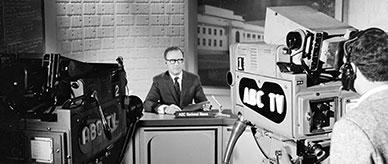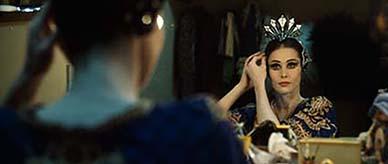
Transcript
Advertisement one
MUSIC: Opening bars of Waltzing Matilda
Narrator: That's a little of one of the three tunes being considered as our new National Anthem. The Australian Bureau of Statistics has been asked to find out which tune you would prefer. They're conducting a poll so the government can make a decision. Their household survey people will be calling at a large cross-section of dwellings throughout Australia for your choice.
MUSIC: Closing bars of Waltzing Matilda
Advertisement two
MUSIC: Opening bars of Advance Australia Fair
Narrator: That’s a little of one of the three tunes being considered as our new national anthem. The Australian Bureau of Statistics has been asked to find out which tune you would prefer. They're conducting a poll so the government can make a decision. Their household survey people will be calling at a large cross-section of dwellings throughout Australia for your choice.
MUSIC: Closing bars of Advance Australia Fair
Advertisement three
MUSIC: Opening bars of Song of Australia
Narrator: That's a little of one of the three tunes being considered as our new National Anthem. The Australian Bureau of Statistics has been asked to find out which tune you would prefer. They're conducting a poll so the government can make a decision. Their household survey people will be calling at a large cross-section of dwellings throughout Australia for your choice.
MUSIC: Closing bars of Song of Australia
END
About this record
These are three 45-second radio announcements publicising the Australian Bureau of Statistics (ABS) public opinion poll to determine which of three songs should be adopted as Australia’s new national anthem. The three options were Banjo Paterson’s Waltzing Matilda, Peter McCormick’s Advance Australia Fair or Carl Linger’s Song of Australia. The three advertisements feature a female narrator. Each advertisement contained a musical excerpt of one of the songs in contention.
Educational value
- The national anthem poll publicised in these advertisements was conducted by the ABS in 1974 on behalf of the federal Labor government. The survey drew on a sample of approximately 60,000 people. The poll found that, of the three songs, Advance Australia Fair was the most popular, polling at 51.4 per cent.
- In 1973, the year before the poll was conducted, the Australia Council for the Arts held a national competition to find a ‘distinctively Australian national anthem’. The competition attracted more than 1400 entries for lyrics and 1200 for music. However, the judges felt that none of the entries matched the quality of traditional songs such as Waltzing Matilda, Song of Australia and Advance Australia Fair, and recommended that the choice be made from these three songs.
- In 1974, Labor Prime Minister Gough Whitlam announced that Advance Australia Fair would become the national anthem. In 1976, the Liberal Prime Minister Malcolm Fraser reinstated God Save the Queen for royal and certain official occasions. In 1977, Fraser held a full national poll and a referendum. The poll, conducted by the Australian Electoral Office, confirmed Advance Australia Fair (at 43.2 per cent) as the most popular song—ahead of Waltzing Matilda (28.3 per cent), God Save the Queen (18.7 per cent) and Song of Australia (9.6 per cent).
- Peter Dodds McCormick, a Scottish migrant, composed the music and lyrics to Advance Australia Fair in 1878. The original song was first performed in public in 1878 and again at the Inauguration of the Commonwealth in 1901. In 1981, the National Australia Day Council slightly revised the lyrics of the original 19th-century version and in 1984 the song finally replaced God Save the Queen as the Australian national anthem for all occasions.
- The push for an Australian national anthem dates back to at least the 1820s. In 1901, Federation renewed interest in the idea of a distinctly Australian anthem as an important symbol of Australia as an independent nation. The 1956 Melbourne Olympics sparked further public debate when Australian victories were celebrated with the same anthem as that of Britain. In 1972, Prime Minister Whitlam argued for a national anthem that ‘fittingly embodies our national aspirations’.
- The Australian national anthem is a symbol that identifies Australia at public events, both within Australia and abroad. Its official and commercial use is guided by a set of protocols for its performance and arrangement. These guidelines include the custom of standing when the anthem is played at ceremonial or public events. God Save the Queen is the Royal Anthem and is still played at the beginning of local public events attended by members of the royal family. Advance Australia Fair is usually played at the end of such events.
Acknowledgments
Learning resource text © Education Services Australia Limited and the National Archives of Australia 2010.
Related themes
Need help with your research?
Learn how to interpret primary sources, use our collection and more.


